Guide To Witness The Stunning Architecture Of Chhatrapati Shivaji Terminus In 2025
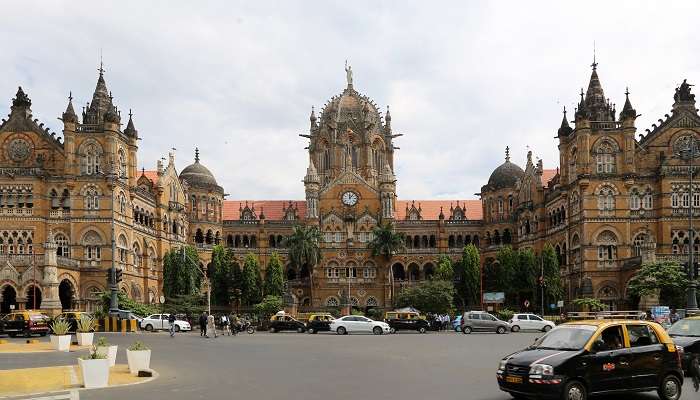
The magnificent Chhatrapati Shivaji Terminus stands in the heart of bustling Mumbai, a city known for its vibrant energy and rich history. A UNESCO World Heritage site, this architectural marvel is not merely a railway station; it’s an iconic symbol of India’s colonial past and a testament to the fusion of Victorian Gothic and Indian architectural styles. Once known as Victoria Terminus, the Chhatrapati Shivaji Terminus (CST) has witnessed Mumbai’s evolution over the centuries. From its humble beginnings as a railway station in 1888 to its current status as a central transportation hub and a tourist attraction, CST has played a pivotal role in the city’s growth and development. Today, it continues to awe visitors with its intricate details, stunning facade, and bustling atmosphere.
A Glimpse Into History
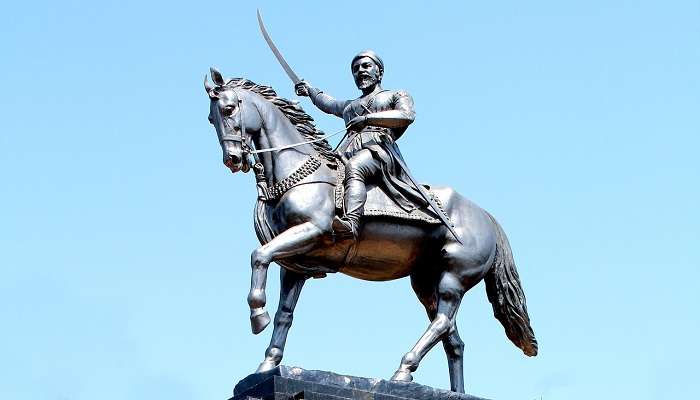
The story of Chhatrapati Shivaji Terminus began in the late 19th century when the British Raj sought to build a railway station, symbolising their power and ambition. Designed by the renowned architect Frederick William Stevens, the construction of CST commenced in 1878 and took ten long years to complete. The station was initially named Victoria Terminus in honour of Queen Victoria and was inaugurated on her Golden Jubilee in 1887.
In 1996, the station was renamed Chhatrapati Shivaji Terminus in honour of the great Maratha warrior king, Chhatrapati Shivaji Maharaj. This change reflected the growing nationalistic sentiment in India and the desire to celebrate its cultural heritage.
Also Read: Things To Do In Mumbai For 2 Days
Architectural Marvel

Chhatrapati Shivaji Terminus is an architectural marvel that seamlessly blends Indian and Victorian Gothic Revival styles. The station’s imposing façade has intricate carvings, sculptures, and stained-glass windows. The central dome, a prominent feature of the station, rises majestically above the skyline, while the high-pitched roofs, pointed arches, and ornate balconies add to its visual appeal.
Inside, the station is equally impressive, with its spacious halls, ornate ceilings, and grand staircases. The main concourse, the Star Chamber, is a sight to behold, with its high vaulted ceiling and stained-glass windows depicting scenes from Indian mythology and history.
A Transportation Hub
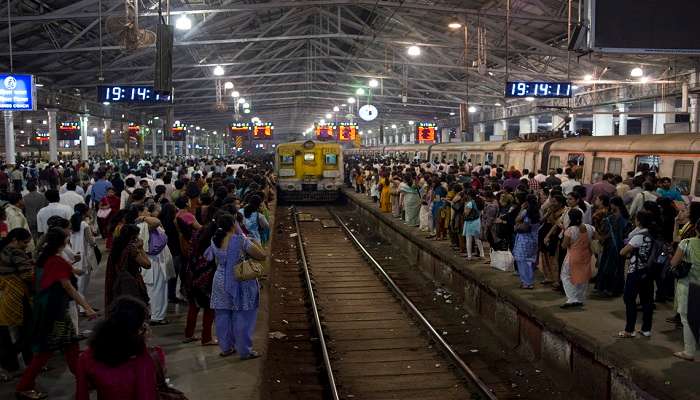
Chhatrapati Shivaji Terminus is the headquarters of the Central Railways and serves as a major transportation hub for Mumbai and the surrounding regions. The station handles many long-distance and suburban trains, connecting Mumbai to various parts of India. The station’s platforms are always bustling with activity, with passengers rushing to catch their trains and vendors selling wares.
Despite its busy atmosphere, Chhatrapati Shivaji Terminus remains a popular tourist destination. Visitors worldwide come to admire its architectural beauty, learn about its history, and experience the hustle and bustle of Indian railway life.
Related Posts: Kune Falls
Preserving Heritage
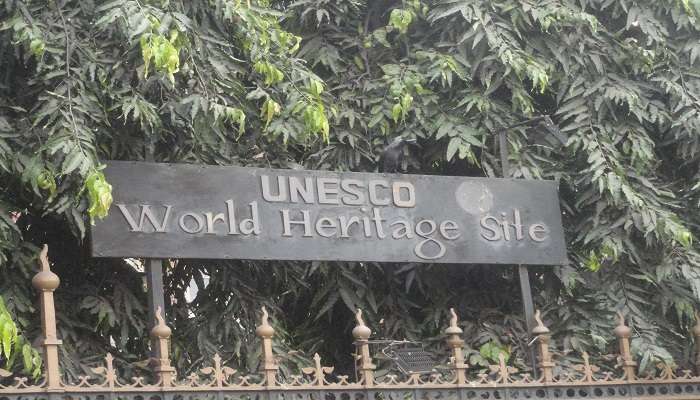
Chhatrapati Shivaji Terminus is more than just a railway station; it symbolises India’s rich heritage and a reminder of its colonial past. The station has witnessed countless historical events and has played a significant role in developing Mumbai as a major metropolis.
In 2004, Chhatrapati Shivaji Terminus was declared a UNESCO World Heritage Site, recognizing its outstanding universal value and the need to preserve it for future generations. Over the years, the station has undergone several restoration and conservation efforts to maintain its original glory.
The Heart Of Mumbai
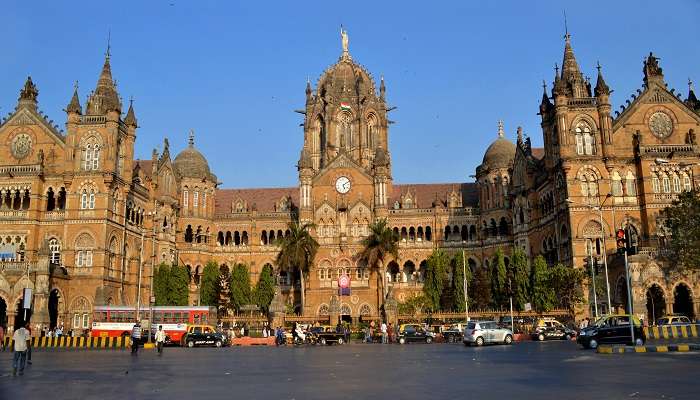
Chhatrapati Shivaji Terminus is not just a railway station; it is the heart of Mumbai, pulsating with life and energy. The station is a cultural melting pot where people from all walks of life converge, creating a vibrant and diverse atmosphere.
From the daily commuters rushing to catch their trains to the tourists exploring its architectural wonders, CST is a microcosm of Mumbai’s dynamic spirit.
Related Posts: Dugarwadi Waterfalls
Explore The Surroundings
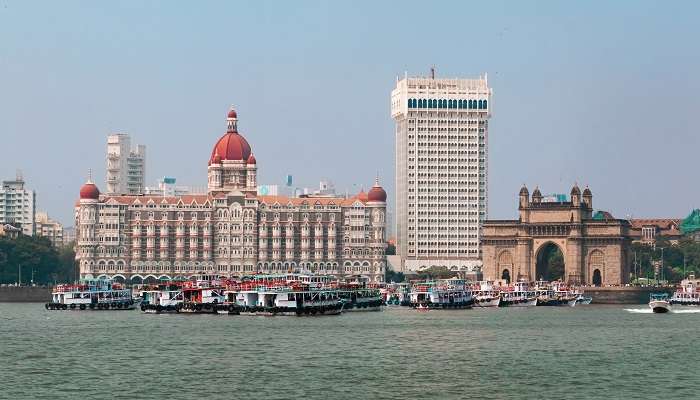
Chhatrapati Shivaji Terminus is surrounded by several historical and cultural landmarks, making it an ideal starting point for exploring Mumbai. The iconic Gateway of India, the majestic Taj Mahal Palace Hotel, and the bustling Crawford Market are within walking distance. You can also stroll along the Marine Drive promenade, enjoying scenic views of the Arabian Sea.
A Photographer’s Paradise

Chhatrapati Shivaji Terminus is a photographer’s paradise, offering endless opportunities to capture its architectural grandeur and vibrant atmosphere.
From the intricate carvings on its façade to the bustling platforms filled with colourful characters, every corner of CST tells a story. The station is particularly stunning when illuminated at night, creating a magical ambiance.
You May Also Like To Read: Lonavala Places To Visit In One Day
The Chhatrapati Shivaji Terminus is one of Mumbai’s most beautiful tourist destinations and is well known for its architectural marvel and historic value. It’s an iconic symbol of India’s colonial past and a testament to the fusion of Victorian Gothic and Indian architectural styles. So what are you waiting for? Plan your next trip to Mumbai today and embark on a memorable journey to this historic site, bathing in its architectural beauty.
For our editorial codes of conduct and copyright disclaimer, please click here.
Cover Image Credit: Sailko for wikimedia commons
Frequently Asked Questions About Chhatrapati Shivaji Terminus
What is the significance of the Chhatrapati Shivaji Terminus?
Chhatrapati Shivaji Terminus, formerly known as Victoria Terminus, is not merely a railway station; it's an architectural masterpiece and a UNESCO World Heritage Site. As the headquarters of the Central Railways, it's a bustling transportation hub and an iconic symbol of Mumbai's rich history and cultural heritage.
What is the history behind CST's architecture?
Designed by British architect Frederick William Stevens, CST is a stunning example of Victorian Gothic Revival architecture blended with Indian traditional themes. The station's intricate stone carvings, high vaulted ceilings, stained glass windows, and grand central dome are a testament to the exquisite craftsmanship of the late 19th century.
Can I take a tour of CST?
Yes, you can! Guided tours of CST are available, offering a fascinating glimpse into the station's history, architecture, and daily operations. The tours are a great way to appreciate the finer details of the building and learn about its cultural significance.
What are some interesting facts about CST?
CST is one of the busiest railway stations in India, handling thousands of passengers daily. It has been featured in numerous Bollywood films and is a popular tourist attraction. The station also houses a railway museum showcasing vintage locomotives and railway artefacts.
Are there any shops or markets near CST?
Yes, the area surrounding CST is known as Fort. It's a bustling commercial district with numerous shops, markets, and office buildings. You can find everything from clothing and electronics to souvenirs and street food in this vibrant neighbourhood.
People Also Read:
Places To Visit In Mumbai Things To Do In Mumbai Fun Places In Mumbai

With a passion for exploring and travelling to the roads long forgotten, experience the world through enthralling stories and adventures. Join me as I share my experiences at some of the world’s most popular tourist destinations and quench that pestering curiosity with something exciting!











